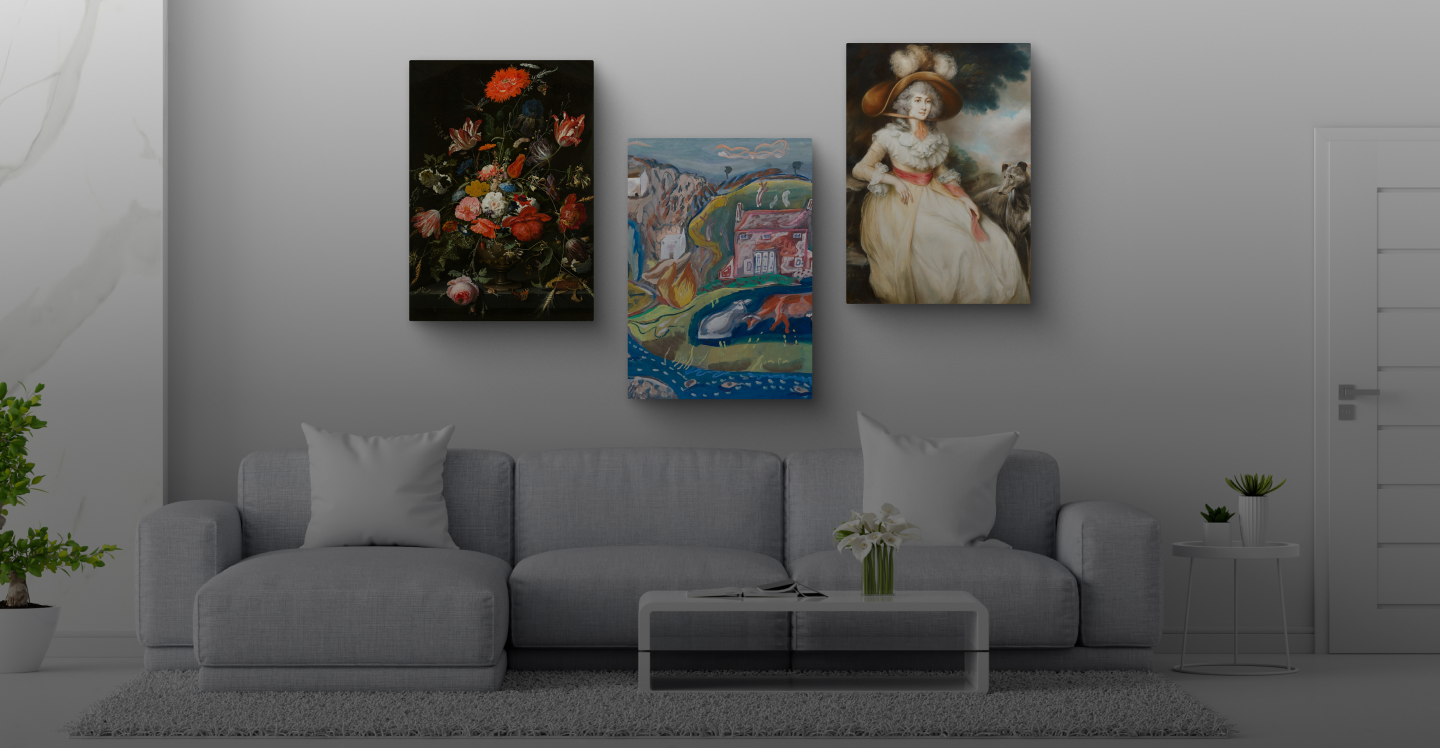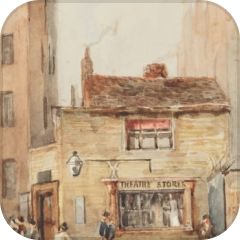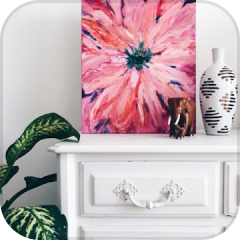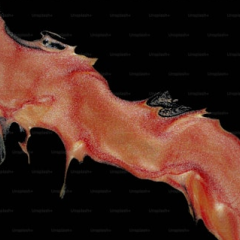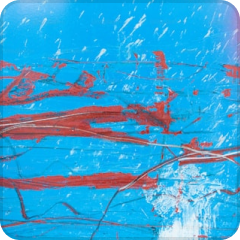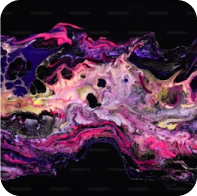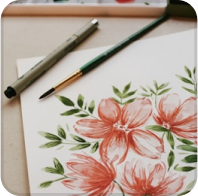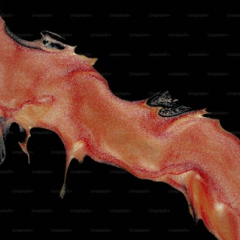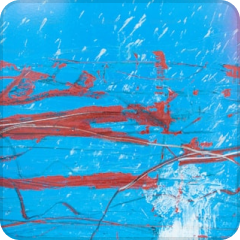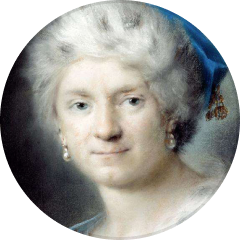





Top Categories
Transform Your Space with Personalized Art Prints
Bring your walls to life with premium, customizable canvas prints. Whether it’s your favorite memories or inspiring art, Zebaco makes it easy to create beautiful, durable pieces that reflect your style.

High-Quality Prints

Affordable Custom Art

100% Satisfaction
What’s On Sale
What Our Customers are Saying


Oliver Stone
"I recently purchased a stunning canvas from Zebaco, and I couldn't be happier with my choice! The vibrant colors and exquisite detail have truly transformed my living room. “


Amelia Rivers
"I recently purchased a stunning canvas from Zebaco, and I couldn't be happier with my choice! The vibrant colors and exquisite detail have truly transformed my living room. “


Ethan Hawke
"I recently purchased a stunning canvas from Zebaco, and I couldn't be happier with my choice! The vibrant colors and exquisite detail have truly transformed my living room. “


Sophia Bennett
"I recently purchased a stunning canvas from Zebaco, and I couldn't be happier with my choice! The vibrant colors and exquisite detail have truly transformed my living room. “


Sophia Bennett
"I recently purchased a stunning canvas from Zebaco, and I couldn't be happier with my choice! The vibrant colors and exquisite detail have truly transformed my living room. “
Decorate Your Walls with Affordable Stickable Photo Tiles
Picture tiles represent a groundbreaking approach to home decoration that has fundamentally transformed how people showcase their treasured memories. These innovative display solutions emerged from the need for flexible, affordable, and aesthetically pleasing ways to exhibit photographs without the limitations of traditional framing methods. The concept revolves around lightweight, adhesive-backed photo displays that eliminate the complexities associated with conventional wall mounting systems.
The evolution of picture display methods has progressed significantly from heavy wooden frames and glass-covered portraits to these modern, streamlined alternatives. Picture tiles address numerous pain points that homeowners and renters have experienced for decades, including wall damage from nails and screws, the expense of professional framing, and the difficulty of rearranging displays. These contemporary solutions offer unprecedented flexibility while maintaining professional appearance standards that rival traditional gallery presentations.
The construction of picture tiles typically involves high-quality photographic prints mounted on specialized foam core materials that provide structural integrity while remaining remarkably lightweight. This unique combination creates a dimensional effect that allows images to appear to float slightly off the wall surface, adding visual depth and interest to any space. The foam core backing serves multiple purposes, providing durability, preventing warping, and creating the perfect foundation for secure adhesive mounting systems.
The Science Behind Lightweight Photo Display Systems
The engineering behind picture tiles represents a sophisticated balance of materials science and aesthetic design principles. The foam core substrate used in these products is specifically chosen for its exceptional strength-to-weight ratio, ensuring that even large format displays remain manageable for single-person mounting. This lightweight characteristic stems from the cellular structure of the foam material, which creates numerous air pockets that reduce overall mass while maintaining structural stability.
The photographic printing process employed for picture tiles utilizes advanced digital printing technologies that ensure color accuracy, longevity, and resistance to fading. These printing methods often incorporate UV-resistant inks and specialized coating processes that protect the image from environmental factors such as humidity, temperature fluctuations, and exposure to natural light. The result is a display medium that maintains its visual impact for years without the degradation commonly associated with traditional photographic prints.
Adhesive technology plays a crucial role in the functionality of picture tiles. Modern adhesive strips designed for these applications feature removable properties that allow for repositioning without leaving residue or causing wall damage. These adhesives utilize advanced polymer chemistry that creates strong bonds with various wall surfaces while remaining reversible. The adhesive strips are engineered to distribute weight evenly across their surface area, preventing stress concentrations that could lead to mounting failures.
The dimensional effect achieved by picture tiles results from the slight separation between the wall surface and the photograph, created by the thickness of the foam backing. This separation allows ambient lighting to cast subtle shadows around the edges of the display, creating the illusion that the image is floating independently of the wall. This three-dimensional quality adds visual interest and sophistication to the display while maintaining the clean, modern aesthetic that makes picture tiles so appealing.
Exploring Size Variations and Format Options
Picture tiles are available in an extensive range of dimensions that accommodate virtually any display requirement or space constraint. The most popular square formats include compact 6-inch options perfect for intimate spaces, standard 8-inch versions ideal for social media prints, substantial 12-inch displays that command attention, and impressive 16-inch formats that serve as statement pieces. Each size category serves specific purposes and spatial requirements, allowing users to create balanced compositions that complement their existing decor.
Rectangular formats expand the creative possibilities even further, with standard photo dimensions like 5x7, 8x10, and 11x14 being readily available. These traditional proportions accommodate landscape and portrait photography equally well, making them versatile choices for diverse image collections. Larger rectangular options, including 16x20 and 20x30 formats, provide opportunities for dramatic visual impact in spacious rooms or as focal points in gallery-style arrangements.
The selection of appropriate sizes depends on multiple factors, including viewing distance, available wall space, surrounding decor elements, and the specific characteristics of the photographs being displayed. Smaller formats work exceptionally well in clusters or grid arrangements, creating cohesive visual narratives through repetition and pattern. Medium sizes offer flexibility for both standalone displays and grouped arrangements, while larger formats are best suited for featured displays where individual images receive focused attention.
Custom sizing options have become increasingly available, allowing users to specify exact dimensions that match their unique requirements. This customization capability proves particularly valuable for specific architectural features, unusual wall spaces, or when creating displays that must integrate with existing furnishings or artwork. The ability to order precise dimensions ensures that picture tile installations can achieve professional-level visual harmony regardless of spatial constraints.
Design Flexibility and Creative Arrangement Strategies
The modular nature of picture tiles opens up countless creative possibilities for wall arrangement and design composition. Unlike traditional framed photographs that require careful planning and measurement for proper hanging, picture tiles can be easily repositioned during the design process, allowing for experimental layouts and iterative refinement. This flexibility encourages creative exploration and enables users to develop unique display concepts that reflect their personal aesthetic preferences.
Grid arrangements represent one of the most popular approaches to picture tile composition, offering clean, organized displays that work well in contemporary and minimalist settings. These geometric layouts can incorporate uniform spacing for formal appearances or varied gaps for more dynamic visual rhythms. The ability to create perfect grids without the precision requirements of traditional hanging methods makes this arrangement style accessible to everyone, regardless of their experience with interior decorating.
Mixed-size compositions allow for more dynamic and visually engaging displays that can accommodate different image types and importance levels within a single arrangement. These layouts might feature a large central image surrounded by smaller supporting photographs, or create flowing, organic patterns that guide the eye across the wall surface. The lightweight nature of picture tiles makes experimenting with complex arrangements both safe and practical.
Asymmetrical arrangements challenge traditional design conventions while creating compelling visual narratives. These layouts can follow architectural features such as staircase angles, window frames, or doorway positions, integrating the photograph display seamlessly into the existing spatial structure. The ease of repositioning picture tiles makes asymmetrical designs achievable without the risk and expense typically associated with experimental wall arrangements.
Material Composition and Quality Considerations
The foundation of any quality picture tile begins with the substrate material, which must balance durability, weight, and cost-effectiveness. High-density foam cores provide the ideal combination of these characteristics, offering sufficient structural support for photographic mounting while remaining light enough for adhesive-based wall mounting. The cellular structure of quality foam cores resists compression and maintains dimensional stability over time, preventing warping or distortion that could affect the display appearance.
Photographic print quality varies significantly among different manufacturers and price points. Premium picture tiles utilize archival-quality papers and inks that resist fading, color shifting, and environmental degradation. These materials often feature specialized coating systems that protect against moisture, UV radiation, and atmospheric pollutants while maintaining optimal color saturation and contrast. The printing resolution and color management processes employed also significantly impact the final image quality and longevity.
Edge finishing techniques contribute substantially to the professional appearance and durability of picture tiles. Quality products feature clean, precise edge cuts that prevent fraying or delamination over time. Some manufacturers employ specialized edge sealing processes that protect the foam core from moisture infiltration while maintaining the clean aesthetic that makes picture tiles so appealing. These finishing details often distinguish premium products from budget alternatives.
Surface treatments applied to picture tiles can enhance both appearance and durability. Matte finishes reduce glare and provide sophisticated, gallery-like presentations that work well in various lighting conditions. Glossy finishes enhance color vibrancy and contrast but may create reflection issues in certain lighting situations. Some manufacturers offer specialty finishes such as canvas textures or metallic effects that add unique visual characteristics to the displayed photographs.
Mounting Solutions and Wall Compatibility
The adhesive systems used for picture tile mounting have evolved considerably from early versions that often failed to provide adequate holding power or left residue upon removal. Contemporary mounting solutions typically employ multi-layer adhesive strips that feature high-strength bonding capabilities combined with clean removal properties. These strips often incorporate specialized polymer formulations that maintain their adhesive properties over extended periods while remaining removable when desired.
Wall surface compatibility represents a critical consideration for successful picture tile mounting. Most modern adhesive systems work effectively on painted drywall, which represents the most common residential wall surface. However, different paint types and textures can affect adhesive performance, with flat paints generally providing better bonding surfaces than high-gloss finishes. Textured walls may require special consideration or alternative mounting approaches to ensure adequate contact between the adhesive and wall surface.
Weight distribution considerations become important when planning larger displays or using multiple picture tiles in close proximity. While individual tiles may be lightweight, the cumulative weight of extensive arrangements can challenge even high-quality adhesive systems. Understanding load limits and proper spacing helps ensure long-term mounting success and prevents failures that could damage both the tiles and wall surfaces.
Alternative mounting methods exist for situations where adhesive systems may not be appropriate or sufficient. Small finishing nails or pins can provide additional security for valuable displays or in high-traffic areas where accidental contact might occur. Some users prefer hybrid approaches that combine adhesive mounting with minimal mechanical fasteners for added peace of mind, particularly for arrangements that include larger or heavier picture tiles.
Creative Display Concepts and Arrangement Principles
The versatility of picture tiles enables numerous creative display concepts that go beyond traditional rectangular grid arrangements. Spiral patterns can create dynamic focal points that draw attention and create visual movement across wall surfaces. These arrangements work particularly well for storytelling applications where the sequence of images follows a narrative progression or chronological timeline.
Cascading arrangements utilize varying tile sizes to create flowing, waterfall-like compositions that can complement architectural features or furniture placement. These displays often incorporate larger images at the top with progressively smaller tiles descending toward floor level, creating visual weight distribution that feels natural and balanced. The lightweight nature of picture tiles makes these complex arrangements feasible without concerns about mounting stress or wall damage.
Organic, non-geometric layouts break away from traditional design constraints and allow for more expressive, artistic compositions. These arrangements might follow natural curves, create abstract patterns, or respond to existing room elements such as furniture placement or lighting fixtures. The repositionable nature of picture tile mounting systems makes these experimental layouts practical and reversible.
Thematic groupings organize picture tiles around specific subjects, color palettes, or compositional elements. These arrangements might feature all black-and-white photographs, vacation memories from specific destinations, or images that share similar color schemes. Thematic organization creates cohesive visual experiences while allowing for individual image appreciation within the broader context.
Cost Analysis and Budget-Friendly Options
The affordability of picture tiles compared to traditional framing solutions represents one of their most compelling advantages. A comprehensive cost analysis reveals significant savings when displaying multiple photographs, as the per-image expense decreases substantially when using tile formats instead of individual frames. This cost efficiency makes picture tiles particularly attractive for large-scale displays or frequently updated arrangements.
Budget considerations extend beyond initial purchase costs to include long-term value propositions. The reusable nature of mounting systems means that tiles can be repositioned or rearranged without additional mounting hardware expenses. This reusability factor provides ongoing value that traditional mounting methods cannot match, as each rearrangement or update with conventional frames typically requires new hardware or professional assistance.
Volume pricing structures offered by many manufacturers provide additional cost savings for larger orders. These pricing tiers often make it economical to order complete sets or series of picture tiles simultaneously, reducing per-unit costs and shipping expenses. Planning display projects to take advantage of volume pricing can result in substantial overall savings while ensuring visual consistency across the entire arrangement.
Quality versus price relationships require careful consideration when selecting picture tiles. While budget options may offer immediate cost savings, they often compromise on materials, printing quality, or mounting reliability. Investing in medium-quality options typically provides the best balance of affordability and performance, ensuring satisfactory longevity while maintaining budget-friendly pricing.
Surface Preparation and Environmental Considerations
Proper wall surface preparation significantly impacts the success and longevity of picture tile mounting. Clean, dry surfaces provide optimal conditions for adhesive bonding, while dust, grease, or moisture can compromise mounting effectiveness. Simple cleaning with mild detergent solutions followed by thorough drying creates ideal conditions for picture tile mounting and helps ensure long-term adhesive performance.
Environmental factors within the display space can affect both the photographs and mounting systems over time. Humidity levels, temperature fluctuations, and air circulation patterns all influence the stability and appearance of picture tile displays. Understanding these environmental considerations helps users select appropriate locations and take preventive measures to protect their investments.
Lighting conditions play dual roles in picture tile displays, affecting both viewing quality and long-term preservation. Natural light provides excellent illumination for viewing but can contribute to fading over extended periods. Artificial lighting offers more control but may create color temperature issues that affect image appearance. Balancing these lighting considerations helps optimize both immediate visual impact and long-term preservation.
Air quality factors, including exposure to cooking vapors, tobacco smoke, or industrial pollutants, can gradually affect both photograph appearance and adhesive performance. Understanding these environmental challenges helps users make informed decisions about placement locations and protective measures that may be necessary for specific environments.
Photographic Selection and Image Preparation
The success of any picture tile display depends heavily on the quality and characteristics of the source photographs selected for printing. Digital image resolution requirements vary depending on the final tile size, with larger formats demanding higher pixel counts to maintain acceptable print quality. Understanding the relationship between image resolution and print size helps ensure that final displays meet visual quality expectations.
Color management considerations become particularly important when transitioning from digital displays to printed formats. Monitor calibration, color space selection, and printer profiles all influence how digital images translate to physical prints. While professional color management requires specialized knowledge and equipment, basic understanding of these concepts helps users make better image selection and preparation decisions.
Compositional elements that work well in digital formats may not translate effectively to picture tile displays. Images with important details concentrated in corners or edges may suffer when printed on square formats, while photographs designed for specific aspect ratios may require cropping that affects their visual impact. Evaluating photographs for their suitability to tile formats before ordering helps ensure satisfactory results.
Image editing and enhancement opportunities exist for optimizing photographs specifically for picture tile printing. Adjustments to contrast, saturation, and sharpness can improve print quality, while cropping and composition modifications can better utilize the available tile format. Basic photo editing skills enable users to maximize the visual impact of their picture tile displays while working within the constraints of available sizes and formats.
Seasonal Rotation and Display Refresh Strategies
The modular nature of picture tiles makes them ideal for seasonal decoration rotation, allowing users to adapt their displays to match changing seasons, holidays, or personal preferences. This flexibility transforms static wall displays into dynamic, evolving design elements that keep spaces feeling fresh and current. Seasonal rotation strategies can incorporate color schemes, subject matter, or themes that complement specific times of year.
Storage solutions for off-season picture tiles require consideration of both space efficiency and protection requirements. The lightweight nature of tiles makes storage less cumbersome than traditional framed photographs, while their durability allows for compact stacking without damage concerns. Developing organized storage systems enables easy rotation and helps protect investments in multiple tile sets.
Holiday-specific displays can be easily created and maintained using picture tile systems. Whether celebrating major holidays, family anniversaries, or personal milestones, the ability to quickly transform displays makes picture tiles ideal for commemorative decorating. These temporary displays can coexist with permanent installations or completely replace regular arrangements for special occasions.
Photographic archives can be systematically rotated through picture tile displays, ensuring that entire collections receive regular viewing opportunities. This rotation approach prevents valuable photographs from remaining hidden in storage while allowing users to continuously rediscover forgotten images. Establishing rotation schedules helps maintain display freshness while ensuring that all meaningful photographs receive appropriate attention.
Color Coordination and Interior Design Harmony
Achieving visual harmony between picture tile displays and existing interior design elements requires careful consideration of color relationships, spatial proportions, and stylistic consistency. The color palette present in displayed photographs can either complement or contrast with room colors, depending on the desired aesthetic effect. Understanding color theory principles helps users make informed decisions about image selection and arrangement strategies.
Neutral color schemes in picture tiles provide versatility and longevity, working well with changing room decor and seasonal color adjustments. Black-and-white photographs offer timeless appeal and guaranteed compatibility with virtually any color scheme, while sepia or monochromatic treatments can add warmth and vintage charm to contemporary spaces. These neutral approaches ensure that picture tile displays remain relevant regardless of future decorating changes.
Bold color statements using vibrant, saturated photographs can create dramatic focal points and inject energy into neutral room schemes. These high-impact displays work particularly well in spaces that lack architectural interest or in rooms where the occupants want to express personality through their decor choices. Careful balance between bold photographic elements and surrounding room colors prevents overwhelming the space while maintaining visual excitement.
Gradient and tonal progressions across multiple picture tiles can create sophisticated, gallery-like displays that demonstrate advanced design sensibility. These arrangements might progress from light to dark tones, warm to cool colors, or saturated to muted intensities. Such progressive displays create visual flow and movement while maintaining overall cohesion through careful color relationships.
Family Lifestyle Integration and Memory Preservation
Picture tiles excel in family environments where photo displays need to evolve continuously to reflect changing family dynamics, growing children, and accumulating memories. The ease of updating displays makes it practical to maintain current representations of family life without the expense and hassle associated with traditional framing approaches. This adaptability proves particularly valuable for young families where change occurs rapidly.
Milestone documentation becomes more manageable and visually appealing when using picture tile systems. First steps, graduations, sports achievements, and family vacations can be highlighted temporarily before being rotated into long-term storage, ensuring that current accomplishments receive appropriate attention while preserving historical memories. This approach creates dynamic family galleries that celebrate both past and present.
Child-friendly aspects of picture tiles include their lightweight construction, which reduces injury risks if tiles are accidentally knocked from walls, and their durable construction, which withstands normal household activity levels. The absence of glass components eliminates breakage concerns, while the smooth edges prevent cuts or scratches. These safety features make picture tiles appropriate for homes with young children or pets.
Multi-generational appeal emerges when picture tile displays incorporate photographs spanning different family eras and generations. Grandparents' historical photographs can be displayed alongside contemporary family images, creating visual bridges between past and present. This inclusive approach helps strengthen family connections while creating educational opportunities for younger family members to learn about their heritage.
Professional Photography Showcase Applications
Professional photographers and artists find picture tiles valuable for portfolio displays, client presentations, and exhibition purposes. The clean, modern aesthetic of tile displays allows photographs to speak for themselves without decorative frame elements that might distract from the image content. This minimalist approach aligns with contemporary gallery presentation standards while remaining accessible and affordable.
Portfolio presentation benefits include the ability to easily update displayed work as new projects are completed or when targeting different client types or market segments. The modular nature of picture tiles allows photographers to create custom arrangements that highlight specific skills, styles, or subject matter expertise. This flexibility proves particularly valuable for photographers who work across multiple genres or who regularly update their promotional materials.
Client presentation opportunities arise when photographers use picture tiles to display sample work in their studios or meeting spaces. The professional appearance of tile displays creates positive impressions while demonstrating the photographer's attention to presentation quality. Clients can easily visualize how their own images might appear in similar displays, potentially increasing sales of photographic prints and display products.
Exhibition and show applications benefit from the portability and ease of setup that picture tiles provide. Unlike traditional mounting systems that require extensive setup time and specialized hardware, picture tile displays can be assembled quickly and adjusted easily during installation. This convenience makes them attractive options for temporary exhibitions, art fairs, or rotating gallery displays.
Commercial and Office Environment Applications
Corporate environments increasingly utilize picture tile displays for various purposes, including employee recognition, company history presentations, and brand promotion. The professional appearance and easy maintenance characteristics of picture tiles make them suitable for high-traffic commercial spaces where traditional framed displays might suffer damage or require frequent cleaning.
Brand representation through carefully curated photographic displays helps companies communicate their values, culture, and achievements to employees, clients, and visitors. Picture tiles enable these displays to be updated regularly to reflect current projects, new achievements, or evolving company directions. This dynamic capability ensures that corporate displays remain relevant and engaging rather than becoming outdated fixtures.
Employee recognition programs benefit from the flexibility of picture tile systems, which allow for regular updates to highlight different team members, achievements, or milestones. The ability to easily refresh these displays ensures that recognition programs remain active and visible rather than becoming stale installations that lose their motivational impact. Cost-effective updating encourages more frequent recognition activities.
Reception and common area enhancement through picture tile displays creates welcoming environments that reflect company personality and values. These displays can showcase company projects, community involvement, or team building activities, helping to create positive impressions for visitors while building internal company pride. The easy maintenance and updating of these displays ensures they remain fresh and relevant.
Rental Property and Temporary Housing Solutions
Rental property residents face unique challenges when attempting to personalize their living spaces due to restrictions on wall modifications and concerns about security deposits. Picture tiles address these challenges by providing damage-free mounting options that allow for complete removal without wall damage or residue. This characteristic makes them ideal solutions for temporary living situations.
Lease compliance considerations make picture tiles attractive alternatives to traditional hanging methods that might violate rental agreements or risk security deposit forfeiture. The removable adhesive systems used with picture tiles typically meet the requirements for damage-free wall treatments, allowing renters to enjoy personalized photo displays without legal or financial concerns.
Temporary housing situations, including corporate relocations, military deployments, or extended travel assignments, benefit from the portability and easy setup characteristics of picture tile systems. These displays can be quickly installed in new locations and easily packed for transport when moving. The lightweight nature and protective packaging options make picture tiles practical for frequently relocated lifestyles.
Security deposit protection represents a primary concern for many renters when considering wall decorations. Picture tiles eliminate the risks associated with nail holes, adhesive residue, or wall damage that could result in deposit deductions. This financial protection makes picture tiles particularly valuable for younger renters or those in short-term housing situations where deposit preservation is critical.
Maintenance Requirements and Longevity Factors
Regular maintenance requirements for picture tile displays are minimal compared to traditional framed photographs, primarily involving periodic dusting and occasional adhesive inspection. The absence of glass surfaces eliminates the need for glass cleaning, while the smooth surfaces of picture tiles resist dust accumulation and clean easily with standard household cleaning methods. This low-maintenance characteristic makes them particularly suitable for busy households or commercial environments.
Longevity factors affecting picture tile displays include exposure to environmental conditions, mounting system degradation, and photographic material stability. Quality tiles properly mounted and maintained can provide years of reliable display performance without significant degradation. Understanding the factors that influence longevity helps users maximize their investment and maintain attractive displays over time.
Cleaning protocols for picture tiles should avoid harsh chemicals or abrasive materials that might damage photographic surfaces or adhesive systems. Gentle dusting with microfiber cloths or light vacuuming with brush attachments typically suffices for regular maintenance. Occasional damp cleaning with mild soap solutions can address more stubborn soil without damaging the display materials.
Periodic inspection of mounting systems helps identify potential issues before they result in display failures. Checking adhesive strip condition, ensuring continued wall contact, and monitoring for any signs of loosening or degradation allows for preventive maintenance that extends display life. Early identification of mounting issues enables timely replacement or reinforcement before failures occur.
Photography Printing Considerations and Image Quality
Print resolution requirements for picture tiles depend on viewing distance and final display size, with larger tiles generally requiring higher resolution source images to maintain acceptable quality. Understanding the relationship between pixel density and print quality helps users select appropriate source images and avoid disappointing results from insufficient resolution photographs.
Color accuracy in picture tile printing involves multiple factors, including monitor calibration, color space selection, and printer characteristics. While professional color management requires specialized knowledge, basic understanding of these concepts helps users anticipate how their digital images will appear in printed format. Many printing services provide color proofing options that allow users to preview results before committing to full orders.
Image editing opportunities exist for optimizing photographs specifically for picture tile printing. Adjustments to brightness, contrast, and saturation can enhance print quality, while sharpening and noise reduction can improve final appearance. Basic photo editing skills enable users to maximize the visual impact of their picture tile displays while accommodating the specific characteristics of the printing and display process.
File format considerations affect both print quality and processing efficiency. High-quality JPEG files typically provide adequate quality for most picture tile applications while maintaining manageable file sizes for online ordering systems. RAW format files offer maximum quality potential but may require conversion and professional editing to achieve optimal results. Understanding format requirements helps streamline the ordering process and ensures quality outcomes.
Space Planning and Room Integration Strategies
Effective space planning for picture tile displays requires consideration of room proportions, furniture placement, lighting conditions, and traffic patterns. The scale of the display should complement the room size, with larger spaces accommodating more extensive arrangements while smaller rooms benefit from focused, carefully proportioned displays. Understanding these spatial relationships helps create visually balanced installations that enhance rather than overwhelm the space.
Furniture relationship considerations affect both the visual impact and practical functionality of picture tile displays. Displays positioned above sofas, beds, or dining tables should relate proportionally to the furniture dimensions while maintaining appropriate clearance heights. The lightweight nature of picture tiles provides flexibility in positioning that traditional heavy frames cannot match.
Lighting integration opportunities include positioning displays to take advantage of natural light sources while avoiding direct sunlight that might cause fading. Artificial lighting can be directed to highlight picture tile displays, creating dramatic effects and ensuring optimal viewing conditions during evening hours. The dimensional characteristics of picture tiles interact favorably with angled lighting, creating subtle shadow effects that enhance visual interest.
Traffic flow considerations ensure that picture tile displays are positioned where they can be appreciated without interfering with normal room circulation. High-traffic areas may require more durable mounting solutions or protective considerations, while quieter locations allow for more delicate arrangements and experimental layouts.
Seasonal Decorating and Holiday Displays
Picture tiles excel in seasonal decorating applications due to their easy mounting and removal characteristics. Holiday-specific displays can be created temporarily without permanent wall modifications, allowing users to celebrate seasonal events while maintaining their regular photo displays during off-seasons. This flexibility makes picture tiles ideal for households that enjoy extensive holiday decorating.
Storage solutions for seasonal picture tile collections should protect the tiles while minimizing space requirements. Flat storage systems work well for picture tiles, allowing multiple sets to be stored compactly between seasons. Protective sleeves or boxes prevent damage during storage while keeping sets organized and easily accessible for future use.
Transition strategies between seasonal displays can incorporate overlapping arrangements that gradually shift from one theme to another. This approach creates smooth transitions that avoid abrupt changes while allowing users to extend the enjoyment of each seasonal theme. The ease of adding and removing individual tiles makes these gradual transitions practical and visually appealing.
Planning seasonal displays in advance allows users to coordinate color schemes, themes, and purchasing schedules for optimal visual impact and cost efficiency. Annual planning can identify opportunities for volume purchases, ensure adequate preparation time, and coordinate displays with other seasonal decorating elements throughout the home.
Gift-Giving and Personalization Opportunities
Picture tiles make exceptional personalized gifts due to their universal appeal, practical functionality, and emotional value. The ability to incorporate meaningful photographs creates deeply personal presents that recipients can immediately display and enjoy. The variety of available sizes and formats allows gift-givers to select options appropriate for any living situation or space constraint.
Customization options extend beyond simple photograph selection to include border styles, background colors, and arrangement suggestions. Some manufacturers offer gift packaging, card options, and delivery services that enhance the gift-giving experience. These additional services make picture tiles convenient choices for long-distance gift-giving or when presentation quality is particularly important.
Occasion-specific applications for picture tile gifts include weddings, graduations, anniversaries, and housewarming celebrations. Wedding gifts might feature engagement or ceremony photographs, while graduation gifts could showcase academic achievements or milestone moments. The personal nature of photographic gifts ensures meaningful impact regardless of the specific occasion.
Group gift opportunities arise when multiple contributors combine resources to create comprehensive picture tile sets for recipients. Wedding parties, office colleagues, or family members can collaborate to create extensive displays that individual contributors might not be able to afford independently. Coordination tools and group ordering options facilitate these collaborative gift projects.
Digital Age Photography and Social Media Integration
The proliferation of digital photography and social media platforms has created unprecedented volumes of personal photographs that often remain trapped in digital formats. Picture tiles provide accessible pathways for transitioning digital images into physical displays, bridging the gap between online sharing and tangible home decoration. This transition capability helps users derive maximum value from their digital photography investments.
Social media compatibility features of picture tiles include optimized sizing for popular platform formats, particularly square Instagram images that translate perfectly to square tile formats. This compatibility eliminates the need for cropping or reformatting when transitioning social media content to physical displays. The immediate recognition of familiar social media formats helps users visualize how their digital content will appear in physical form.
Digital organization strategies become important when managing large photograph collections for picture tile display purposes. Effective organization systems help users identify the best candidates for physical display while maintaining access to entire digital collections. Cloud storage integration and photo management software can streamline the selection and ordering process for picture tiles.
Backup and preservation considerations extend beyond digital storage to include physical display creation. Picture tiles can serve as tangible backups for important digital photographs while providing ongoing enjoyment through physical display. This dual-purpose functionality adds value to picture tile investments while providing protection against digital data loss.
Environmental Impact and Sustainability Considerations
Sustainability factors in picture tile production and disposal reflect growing consumer awareness of environmental impact. Manufacturing processes, material selection, and end-of-life disposal options all contribute to the overall environmental footprint of picture tile products. Understanding these factors helps environmentally conscious consumers make informed purchasing decisions.
Material sustainability in picture tile construction varies among manufacturers, with some emphasizing recycled content, sustainable sourcing, or environmentally friendly production processes. Foam core materials can often be recycled through specialized programs, while photographic papers may have different disposal requirements. Researching manufacturer sustainability practices helps align purchasing decisions with environmental values.
Longevity and reusability characteristics of picture tiles contribute positively to their environmental impact by reducing the frequency of replacement purchases. Quality tiles that provide years of service deliver better environmental value than cheaper alternatives that require frequent replacement. This longevity factor should be considered alongside initial cost when evaluating different product options.
Packaging and shipping considerations affect the overall environmental impact of picture tile purchases. Minimal packaging, recyclable materials, and efficient shipping methods reduce environmental footprint while maintaining product protection. Some manufacturers offer carbon-neutral shipping options or participate in environmental offset programs that further reduce impact.
Creative Photography Projects and Artistic Expression
Picture tiles enable numerous creative photography projects that might be impractical or prohibitively expensive using traditional display methods. Time-lapse photography series showing seasonal changes, construction progress, or personal transformations can be effectively displayed using multiple tiles arranged chronologically. The affordability of tiles makes these extensive series financially viable.
Artistic experimentation with photographic arrangement becomes accessible through picture tile flexibility. Abstract compositions, color studies, and thematic explorations can be attempted without significant financial risk or permanent commitment. The ability to rearrange and modify displays encourages creative exploration and artistic development.
Collaborative photography projects involving multiple contributors can be effectively showcased using picture tile arrangements. Family members, friends, or community groups can contribute photographs to shared displays that represent collective experiences or perspectives. The modular nature of tiles facilitates these collaborative approaches while maintaining individual recognition for contributors.
Educational photography applications in schools, community centers, or youth programs can utilize picture tiles to create rotating displays of student work, community events, or educational themes. The cost-effectiveness and safety features of tiles make them appropriate for institutional use where traditional framing might be impractical or prohibited.
Regional and Cultural Display Considerations
Cultural sensitivity in picture tile displays becomes important when creating arrangements in diverse households or public spaces. Understanding cultural preferences for family representation, religious considerations, and traditional aesthetic values helps ensure that displays are appropriate and respectful. The flexibility of picture tiles allows for accommodating various cultural requirements without compromising functionality.
Regional aesthetic preferences may influence color choices, arrangement styles, and subject matter selection for picture tile displays. What works well in one geographic region or cultural context may not translate effectively to different settings. Understanding these regional preferences helps users create displays that resonate with their specific communities and environments.
International shipping and availability considerations affect access to picture tile products for users in different countries or regions. Shipping costs, delivery times, and import considerations may influence purchasing decisions and product selection. Researching regional suppliers or alternatives helps ensure access to quality picture tile products regardless of location.
Local climate factors including humidity, temperature extremes, and air quality may affect picture tile performance and longevity in different geographic regions. Understanding these regional challenges helps users select appropriate products and take protective measures to ensure satisfactory performance in their specific environmental conditions.
DIY Projects and Custom Creation Methods
Do-it-yourself picture tile creation offers opportunities for cost savings and complete customization control. Basic materials including foam core substrates, high-quality photographic prints, and appropriate adhesives can be assembled to create custom picture tiles that meet specific size, thickness, or mounting requirements. These DIY approaches require more time investment but offer maximum flexibility and potential cost savings.
Custom sizing and shape creation becomes possible through DIY methods that allow for irregular shapes, precise dimension matching, or unique format requirements. Standard picture tile products may not accommodate every possible application, making custom creation valuable for specific projects or unusual space requirements. Basic cutting and assembly skills enable users to create truly personalized display solutions.
Specialized mounting solutions can be developed for unique situations where standard adhesive systems may not be appropriate. Custom mounting approaches might incorporate magnetic systems, mechanical fasteners, or hybrid solutions that address specific environmental or structural requirements. Understanding basic mounting principles enables users to develop solutions for challenging applications.
Quality control in DIY picture tile creation requires attention to material selection, assembly techniques, and finishing details. While professional manufacturing provides consistency and quality assurance, careful DIY work can achieve comparable results at reduced costs. Understanding quality indicators helps DIY creators achieve professional-looking results while avoiding common pitfalls.
Photographic Memory Preservation and Archival Considerations
Picture tiles serve dual purposes as both decorative elements and physical preservation media for important photographs. While digital storage provides convenience and backup capabilities, physical displays ensure ongoing accessibility and enjoyment of meaningful images. This preservation aspect adds value beyond simple decoration, making picture tiles worthwhile investments for important family memories.
Archival quality considerations in picture tile production affect the long-term preservation value of these displays. Acid-free materials, archival inks, and protective coatings contribute to longevity and help preserve photograph quality over extended periods. Understanding archival standards helps users select products that provide both immediate visual appeal and long-term preservation value.
Rotation and storage strategies for preserving photographic memories through picture tiles might involve systematic cycling of historical photographs through active displays. This approach ensures that important family memories receive regular viewing while protecting them from excessive light exposure or environmental degradation. Developing rotation schedules helps balance preservation and enjoyment goals.
Digital backup integration with physical picture tile displays provides comprehensive memory preservation strategies. Maintaining high-quality digital copies while enjoying physical displays creates redundant preservation systems that protect against various forms of loss or damage. This dual-format approach maximizes both security and accessibility for important family photographs.
Economic Considerations and Value Analysis
Cost-per-display calculations reveal significant advantages for picture tiles compared to traditional framing solutions, particularly when displaying multiple photographs. The elimination of frame costs, matting expenses, and professional mounting fees creates substantial savings that accumulate rapidly with larger displays. Budget-conscious decorators find picture tiles enable extensive photo displays that would be financially prohibitive using conventional framing methods.
Return on investment analysis demonstrates that picture tiles provide excellent value through their reusability, updateability, and longevity characteristics. Unlike traditional frames that become obsolete when photos are changed, picture tile mounting systems continue providing value through multiple photo rotations. This ongoing utility extends the effective lifespan of the initial investment while reducing long-term display costs.
Bulk purchasing strategies can significantly reduce per-unit costs for picture tiles, making extensive displays more affordable. Many manufacturers offer quantity discounts that reward larger orders, encouraging users to plan comprehensive display projects rather than piecemeal purchases. Volume buying also reduces shipping costs and ensures visual consistency across entire displays.
Budget allocation recommendations suggest investing in quality mounting systems and moderate-quality tiles rather than choosing the cheapest available options. This balanced approach provides reliability and attractive appearance while avoiding unnecessary premium costs. Spending distribution across different display elements helps optimize overall value and satisfaction.
Professional Printing Services and Quality Assurance
Professional printing services offer superior quality control, color management, and material selection compared to consumer-level printing options. These services typically utilize calibrated equipment, archival materials, and quality assurance processes that ensure consistent, high-quality results. The additional cost of professional printing often proves worthwhile for important displays or when maximum quality is desired.
Quality assurance measures in professional picture tile production include color matching systems, print inspection processes, and material testing protocols. These measures help ensure that finished products meet quality standards and customer expectations. Understanding quality indicators helps consumers evaluate different service providers and make informed purchasing decisions.
Turnaround time considerations vary among different printing services, with factors including order complexity, current demand, and shipping distance affecting delivery schedules. Rush services typically available for urgent needs, though premium pricing may apply. Planning display projects with adequate lead time helps avoid rush charges while ensuring timely completion.
Custom service options from professional providers might include color correction, image enhancement, sizing consultation, and arrangement planning assistance. These value-added services help ensure optimal results while reducing the burden on customers to manage technical details. Professional guidance proves particularly valuable for complex projects or when working with challenging source images.
Comparative Analysis with Alternative Display Methods
Traditional framing systems require significant upfront investments in frames, matting, and professional mounting services that can quickly exceed picture tile costs for equivalent displays. Frame quality varies enormously, with quality options often costing more than entire picture tile arrangements. The weight and complexity of traditional frames also create mounting challenges that picture tiles elegantly avoid.
Canvas printing alternatives offer some advantages in terms of artistic appearance and mounting simplicity but typically cost significantly more than picture tiles while providing less flexibility for arrangement changes. Canvas prints also require more substantial mounting systems due to their weight and thickness, limiting their suitability for certain wall types or rental situations.
Digital photo frames provide dynamic display capabilities but require ongoing power consumption, software updates, and electronic component maintenance that picture tiles completely avoid. While digital frames offer slideshow capabilities, they cannot match the simultaneous display capacity and reliability of physical picture tile arrangements. Cost considerations often favor picture tiles for permanent display applications.
Gallery wall systems using traditional hanging methods offer maximum customization but require significant planning, precise measurement, and permanent wall modifications that picture tiles eliminate. The complexity and permanence of traditional gallery walls make them impractical for many users who prefer the flexibility and simplicity of picture tile systems.
Artistic Photography and Gallery-Style Presentations
Gallery-style presentations using picture tiles can rival professional exhibition quality while remaining accessible and affordable for home use. The clean, modern aesthetic of tile displays allows photographs to receive full attention without decorative distractions. This minimalist approach aligns with contemporary gallery presentation standards while being achievable in residential settings.
Curatorial approaches to picture tile arrangement involve careful selection, sequencing, and spacing decisions that create cohesive visual narratives. Understanding basic curatorial principles helps users create displays that tell stories, explore themes, or demonstrate artistic development over time. These thoughtful approaches elevate simple photo displays into meaningful artistic statements.
Lighting design for gallery-style picture tile displays can dramatically enhance visual impact and create professional presentation quality. Directional lighting, color temperature selection, and glare prevention contribute to optimal viewing conditions. The dimensional characteristics of picture tiles interact favorably with professional lighting techniques, creating sophisticated shadow effects and visual depth.
Collection development strategies help users build comprehensive picture tile displays over time rather than attempting complete installations immediately. Gradual development allows for careful curation, budget management, and evolving artistic vision. This patient approach often results in higher quality, more meaningful displays than rushed complete installations.
Special Occasion and Event Documentation
Wedding photography displays using picture tiles can create dynamic, evolving presentations that grow and change as relationships develop. Engagement photos can be supplemented with wedding images, honeymoon memories, and anniversary celebrations over time. The ease of updating tile displays makes them ideal for documenting relationship milestones and major life events.
Travel photography collections benefit from picture tile flexibility that allows for destination-specific arrangements or comprehensive travel documentation displays. Individual trips can be highlighted temporarily before being integrated into broader travel galleries. The ability to easily update displays encourages documentation of new adventures while preserving memories of past explorations.
Achievement and milestone documentation becomes more meaningful when displayed prominently using picture tiles. Graduation ceremonies, athletic accomplishments, artistic achievements, and career milestones can be highlighted appropriately before rotating into historical displays. This approach ensures that significant accomplishments receive recognition while maintaining display freshness.
Family gathering documentation can capture and preserve important social connections through picture tile displays. Holiday celebrations, reunions, and special events can be prominently featured before transitioning to family history sections. The flexibility of tile systems makes it practical to maintain current event focus while preserving historical family documentation.
Interior Design Trends and Style Integration
Contemporary design trends favor clean lines, minimal visual clutter, and flexible decorating solutions that picture tiles naturally provide. The absence of bulky frames and complex mounting hardware aligns with modern minimalist aesthetics while still allowing for personal expression through photograph selection. This compatibility with current design trends ensures that picture tile displays remain stylistically relevant.
Color trend integration becomes simplified with picture tiles due to their neutral mounting systems that allow photographs to determine color impact. As interior color trends evolve, picture tile displays can be updated through photograph selection rather than requiring complete display system replacement. This adaptability provides long-term style relevance and cost efficiency.
Texture and material coordination opportunities arise from the smooth, consistent surface characteristics of picture tiles. These uniform surfaces complement various interior materials and textures while providing visual relief from heavily textured or ornate design elements. The simplicity of tile surfaces makes them effective design tools for balancing complex interior schemes.
Scale and proportion considerations in interior design are easily accommodated through the range of available picture tile sizes and arrangement possibilities. Small spaces benefit from carefully proportioned displays that enhance rather than overwhelm, while larger spaces can accommodate extensive arrangements that create dramatic impact. The flexibility of tile systems enables optimal scaling for any interior space.
Building Memorable Gallery Walls and Photo Collections
Gallery wall creation using picture tiles eliminates many traditional challenges while providing superior flexibility for arrangement experimentation. The ability to easily reposition tiles during the design process allows for iterative refinement that ensures optimal final arrangements. This experimental capability encourages creative exploration and helps users develop more sophisticated design skills.
Photo collection curation involves selecting images that work together visually while telling meaningful stories or exploring specific themes. Effective curation considers color relationships, compositional elements, subject matter, and emotional impact to create cohesive displays that engage viewers. The modular nature of picture tiles facilitates this curatorial process by allowing easy testing of different combinations.
Storytelling through photographic arrangement becomes more achievable with picture tiles due to their flexibility and affordability. Chronological narratives, thematic explorations, and emotional journeys can be effectively communicated through carefully planned tile arrangements. The ability to easily modify these narratives as they develop makes picture tiles ideal for evolving storytelling projects.
Visual rhythm and flow in gallery wall arrangements can be achieved through careful attention to spacing, sizing, and color distribution across the display area. Understanding basic design principles helps users create arrangements that guide viewer attention and create satisfying visual experiences. The repositionable nature of picture tiles enables experimentation with these design elements until optimal results are achieved.
Professional Space Enhancement and Corporate Applications
Corporate environment enhancement through picture tile displays can improve workplace atmosphere, communicate company culture, and create more engaging spaces for employees and visitors. The professional appearance and easy maintenance characteristics of picture tiles make them suitable for various commercial applications where traditional decorating methods might be impractical or prohibited.
Brand storytelling opportunities arise when companies use picture tiles to showcase their history, achievements, products, or team members. These displays can be easily updated to reflect current projects, new milestones, or evolving company directions. The flexibility of tile systems enables dynamic corporate storytelling that maintains relevance and engagement over time.
Client reception areas benefit from picture tile displays that create welcoming environments while communicating company personality and capabilities. Professional photography of company projects, team activities, or community involvement can create positive impressions while demonstrating company values and expertise. Easy updating ensures these displays remain current and relevant.
Conference room and meeting space enhancement through picture tile displays can create more engaging environments for business discussions and presentations. Inspirational imagery, company achievement documentation, or industry-relevant photography can contribute to productive meeting atmospheres while reinforcing company culture and values.
Rental Property Investment and Staging Applications
Property staging applications for picture tiles include creating attractive, personalized environments that help potential renters or buyers envision themselves in the space. The temporary nature and damage-free mounting of picture tiles make them ideal for staging purposes where traditional decorating methods might not be practical or cost-effective.
Furnished rental property enhancement through picture tile displays can differentiate properties in competitive markets while providing amenities that tenants appreciate. The ability to easily update displays for different tenants or seasonal changes adds value while minimizing maintenance requirements. This competitive advantage can justify higher rental rates while improving tenant satisfaction.
Property management benefits include the ability to standardize decorating elements across multiple properties while allowing for individualization. Picture tile systems can be implemented consistently while accommodating different tenant preferences or property characteristics. This standardization simplifies maintenance and replacement while providing flexibility for customization.
Investment property value enhancement through picture tile displays can improve property appeal without permanent modifications that might limit future flexibility. The removable nature of displays ensures that property modifications remain reversible while providing immediate visual impact that can influence rental or sale success.
Memory Lane Recreation and Nostalgia Projects
Nostalgic photography projects using picture tiles can recreate historical family moments, document generational changes, or preserve important cultural memories. The affordability and flexibility of tile systems make extensive historical displays practical while the ease of arrangement modification accommodates ongoing discovery of additional historical photographs.
Family history documentation through picture tile displays can create engaging educational experiences for younger family members while preserving important historical information. These displays can combine photographs with brief captions or explanations that provide context and maintain family storytelling traditions. The visual impact of tile displays makes family history more accessible and engaging.
Generational comparison projects can effectively utilize picture tiles to showcase family similarities, document changing times, or celebrate family traditions across different eras. Side-by-side arrangements of historical and contemporary photographs create powerful visual narratives that strengthen family connections while providing entertainment and education.
Heritage preservation through picture tile displays helps maintain cultural connections and family identity across generations. Important cultural celebrations, traditional activities, and historical family properties can be documented and displayed prominently. The ease of creating and maintaining these displays encourages ongoing heritage preservation activities.
Therapeutic and Emotional Benefits of Photo Display
Emotional wellness benefits from displaying meaningful photographs include improved mood, stress reduction, and enhanced sense of connection to important people and experiences. Picture tiles make it practical to maintain current, relevant photo displays that support emotional well-being through regular viewing of positive memories and meaningful relationships.
Memory stimulation through visual cues provided by prominent photo displays can support cognitive health and social connection. For elderly individuals or those experiencing memory challenges, familiar photographs displayed at eye level can provide comfort, conversation starters, and memory reinforcement. The easy arrangement and updating of picture tiles makes this therapeutic application practical for caregivers.
Social connection enhancement occurs when photo displays facilitate conversations about shared experiences, family relationships, or personal achievements. Picture tiles enable prominent display of social photographs that encourage interaction and storytelling. The visual accessibility of tile displays makes them effective tools for maintaining social connections and encouraging family communication.
Stress reduction benefits from personalized, meaningful environment creation can contribute to overall well-being and life satisfaction. Surrounding ourselves with positive visual reminders of important relationships and experiences creates supportive environments that promote emotional stability. The affordability and ease of picture tiles makes this environmental enhancement accessible to everyone.
Global Market Trends and Consumer Preferences
International market trends in picture tile adoption reflect growing consumer appreciation for flexible, affordable decorating solutions that accommodate modern lifestyle requirements. Urbanization, smaller living spaces, and rental property prevalence drive demand for decorating solutions that picture tiles naturally address. These global trends suggest continued market growth and product development.
Consumer preference shifts toward experiential spending and personalized environments favor products like picture tiles that enable ongoing customization and update capabilities. Rather than one-time decorating investments, consumers increasingly prefer solutions that evolve with their changing needs and preferences. Picture tiles align perfectly with these evolving consumer priorities.
Regional market variations in picture tile adoption reflect different cultural approaches to home decoration, available income levels, and housing characteristics. Understanding these regional differences helps manufacturers develop appropriate products and pricing strategies while helping consumers identify suitable options for their specific markets and needs.
Future market projections suggest continued growth in personalized decorating products, with picture tiles positioned to benefit from trends toward customization, affordability, and flexibility. Technological improvements and manufacturing efficiencies should continue reducing costs while improving quality, making picture tiles increasingly attractive to broader consumer segments.
Environmental Adaptability and Climate Considerations
Climate resilience in picture tile design addresses challenges posed by varying humidity levels, temperature fluctuations, and seasonal environmental changes. Quality tiles incorporate materials and construction methods that maintain stability and appearance across diverse environmental conditions. Understanding climate adaptability helps users select appropriate products for their specific environmental challenges.
Humidity resistance features in picture tile construction include moisture-resistant substrates, protective coatings, and adhesive systems designed to maintain performance in varying humidity conditions. These features prove particularly important in bathrooms, kitchens, or basement areas where moisture levels may exceed normal residential ranges.
Temperature stability characteristics ensure that picture tiles maintain their dimensional accuracy and mounting security across normal residential temperature ranges. Quality materials resist warping, expansion, or contraction that could affect appearance or mounting reliability. These stability features contribute to long-term satisfaction and display longevity.
Seasonal adaptation strategies help picture tile displays maintain optimal performance throughout annual weather cycles. These strategies might include temporary protection during extreme conditions, periodic inspection schedules, or preventive maintenance activities that address seasonal challenges before they affect display quality.
Long-Term Planning and Display Evolution
Strategic planning for picture tile displays involves considering how arrangements might evolve over time as new photographs become available, family situations change, or decorating preferences develop. This forward-thinking approach helps users make initial selections that can accommodate future growth and modification without requiring complete replacement.
Collection development strategies help users build comprehensive picture tile displays gradually while maintaining budget control and arrangement coherence. Systematic addition of new tiles over time allows for careful curation and ensures that displays develop organically rather than appearing suddenly complete. This evolutionary approach often results in more meaningful and personally relevant displays.
Space evolution considerations account for potential changes in room usage, furniture arrangement, or household composition that might affect picture tile display requirements. Flexible initial arrangements can accommodate these changes more easily than rigid layouts, while modular systems enable partial modifications without affecting entire displays.
Investment protection strategies help ensure that picture tile purchases provide long-term value through careful product selection, proper maintenance, and strategic arrangement planning. Understanding longevity factors and replacement costs helps users make informed decisions that maximize their decorating investments while providing ongoing satisfaction.
Conclusion
Cheap stickable photo tiles and picture tiles represent a revolutionary approach to personal photography display that addresses numerous limitations of traditional framing methods while providing unprecedented flexibility, affordability, and convenience. Throughout this comprehensive exploration, we have examined every aspect of these innovative display solutions, from their basic construction and mounting principles to their applications in diverse environments and situations.
The fundamental advantages of picture tiles stem from their lightweight construction, damage-free mounting systems, and remarkable affordability compared to conventional framing alternatives. These characteristics make extensive photo displays accessible to virtually everyone, regardless of budget constraints, rental restrictions, or physical limitations. The democratization of quality photo display capabilities represents a significant advancement in home decorating accessibility and creative expression opportunities.
The versatility demonstrated by picture tiles across residential, commercial, and institutional applications showcases their broad utility and appeal. From intimate family galleries to professional portfolio presentations, from seasonal decorating projects to permanent artistic installations, picture tiles adapt seamlessly to diverse requirements while maintaining consistent quality and visual appeal. This adaptability ensures their relevance across changing needs and circumstances.
The economic advantages of picture tiles extend beyond simple cost comparisons to include long-term value propositions through reusability, updateability, and minimal maintenance requirements. The ability to refresh displays regularly without additional mounting costs transforms photo display from a one-time decorating expense into an ongoing source of environmental personalization and enjoyment. This economic model aligns with contemporary consumer preferences for products that provide continuing value.
Environmental considerations surrounding picture tiles reflect both their sustainability advantages through longevity and reusability, and their minimal environmental impact through lightweight shipping and recyclable materials. As environmental consciousness continues growing among consumers, these characteristics position picture tiles favorably compared to alternatives that require more resources or generate more waste throughout their lifecycles.
The technological innovations driving picture tile development promise continued improvements in quality, functionality, and affordability. Advanced printing techniques, improved adhesive systems, and innovative substrate materials contribute to ongoing product enhancement while manufacturing efficiencies help maintain competitive pricing. These trends suggest that picture tiles will continue becoming more attractive and accessible over time.
Looking toward the future, picture tiles appear positioned to benefit from several converging trends including increased personalization demands, smaller living spaces, rental property prevalence, and growing appreciation for flexible decorating solutions. The alignment of picture tile characteristics with these market trends suggests continued growth and development in this product category.
The comprehensive analysis presented throughout this guide demonstrates that cheap stickable photo tiles and picture tiles offer compelling solutions for modern photo display challenges while providing creative opportunities that traditional methods cannot match. Their combination of affordability, flexibility, quality, and convenience makes them valuable tools for anyone seeking to enhance their living or working environments through meaningful photographic displays. Whether used for simple family photo arrangements or sophisticated artistic presentations, picture tiles deliver exceptional value and satisfaction that justifies their growing popularity among consumers worldwide.



